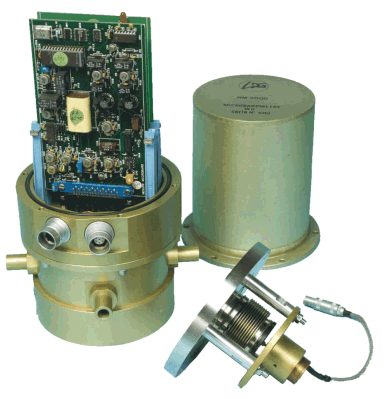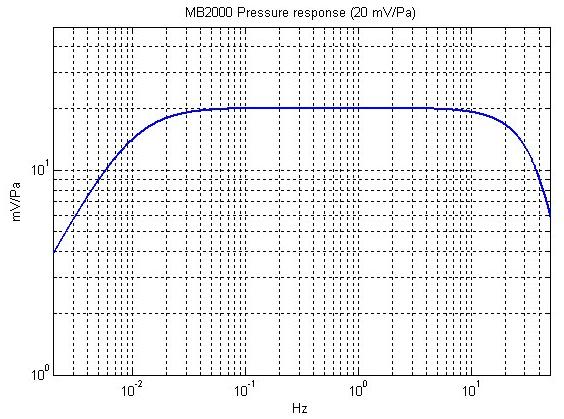 |
 |
 |
 |
 |
MB2000 and MB2005 microbarometers |
 |
 |
 |
Numerous infrasonic signals propagate through the atmosphere. They arise from many sources and include infrasonic waves generated by powerful explosions from natural causes (e.g. volcanoes) or artificial causes (nuclear explosion) that can travel around the Earth several times. The infrasonic waves formed by meteor explosions, volcanic eruptions or powerful earthquakes, can propagate several thousands of kilometers. |
 |
|
 |
 Overview Overview |
 |
|
 |
A microbarometer is a sensor capable of measuring low infrasonic pressure in the atmosphere (frequency band < 20Hz).
DASE MB2000 and MB2005 microbarometers consist in a barometric capsule under vacuum made of Durinval alloy which is deflected by atmospheric pressure variations. This type of capsule can measure pressure fluctuations around ambient pressure (1013 hPa at sea level). Measurements are taken in a frequency range extending from continuous (static pressure) to a few tens of Hertz. Capsule micro-deformation (a few tens of nm/Pa) is measured by a high-resolution LVDT (Linear Variable Differential Transformer) displacement sensor.

 |
MB2000 microbarometer. |
Upper part of the watertight sensor houses the electronics. Lower part of the sensor consists in the measurement chamber (0.6 liters) containing the barometric capsule and the LVDT displacement sensor. This chamber is connected to ambient pressure by four 10 mm diameter inlets. MB2000's design meets quality criteria ensuring a rugged device with a high-precision sensor. |
 |
|
 |
 Measurements Measurements |
 |
|
 |
The MB2000 can sense pressure variations under 1 mPa (instrumental noise being less than 2 mPa at [0.02 - 4] Hz). The maximum pressure level is approximately ± 100 hPa for a sensitivity of 1 mV/Pa, which gives the sensor a dynamic of 134 dB. Sensor's sensitivity is generally 20 mV/Pa to adapt it to digitizers range (maximum pressure level is then ± 5 hPa and dynamic range 108 dB). This sensitivity increase involves removal of the DC component corresponding to atmospheric pressure. This is performed by an accurate electronic high-pass filtering whose frequency can be adjusted from 800 s to 50 s. The MB2000's frequency response is therefore highly stable over time (unlike sensors based on a differential acoustic principle such as microphones). |
 |
|
 |
 Developments Developments |
 |
|
 |
In order to check the frequency response of these sensors, a calibrator has been developed and patented by DASE.
When measuring low-amplitude (<1 Pa) infrasonic pressure waves, pressure variations caused by the wind can mask the signal to be measured. The amplitude of such disturbances can vary by a factor of 1000 depending on wind conditions (<1 mPa in wind-free conditions and >1Pa in medium winds, of the order of 20 m/s). Depending on wind velocity and the effective frequency band, various noise filtering systems can be connected to the sensor's measuring elements to reduce disturbance.

 |
Example of MB2000 pressure response. |
|
| |
|